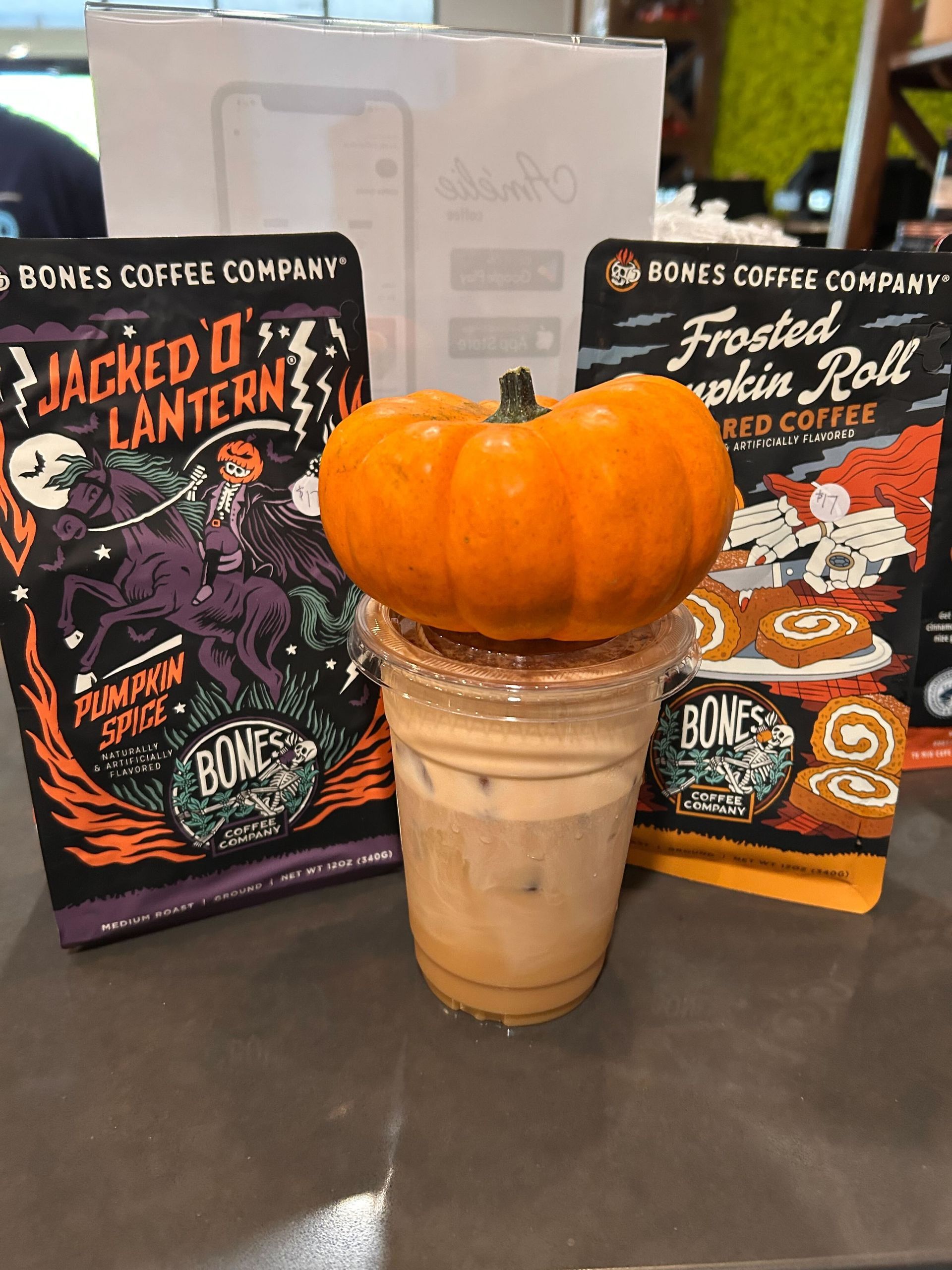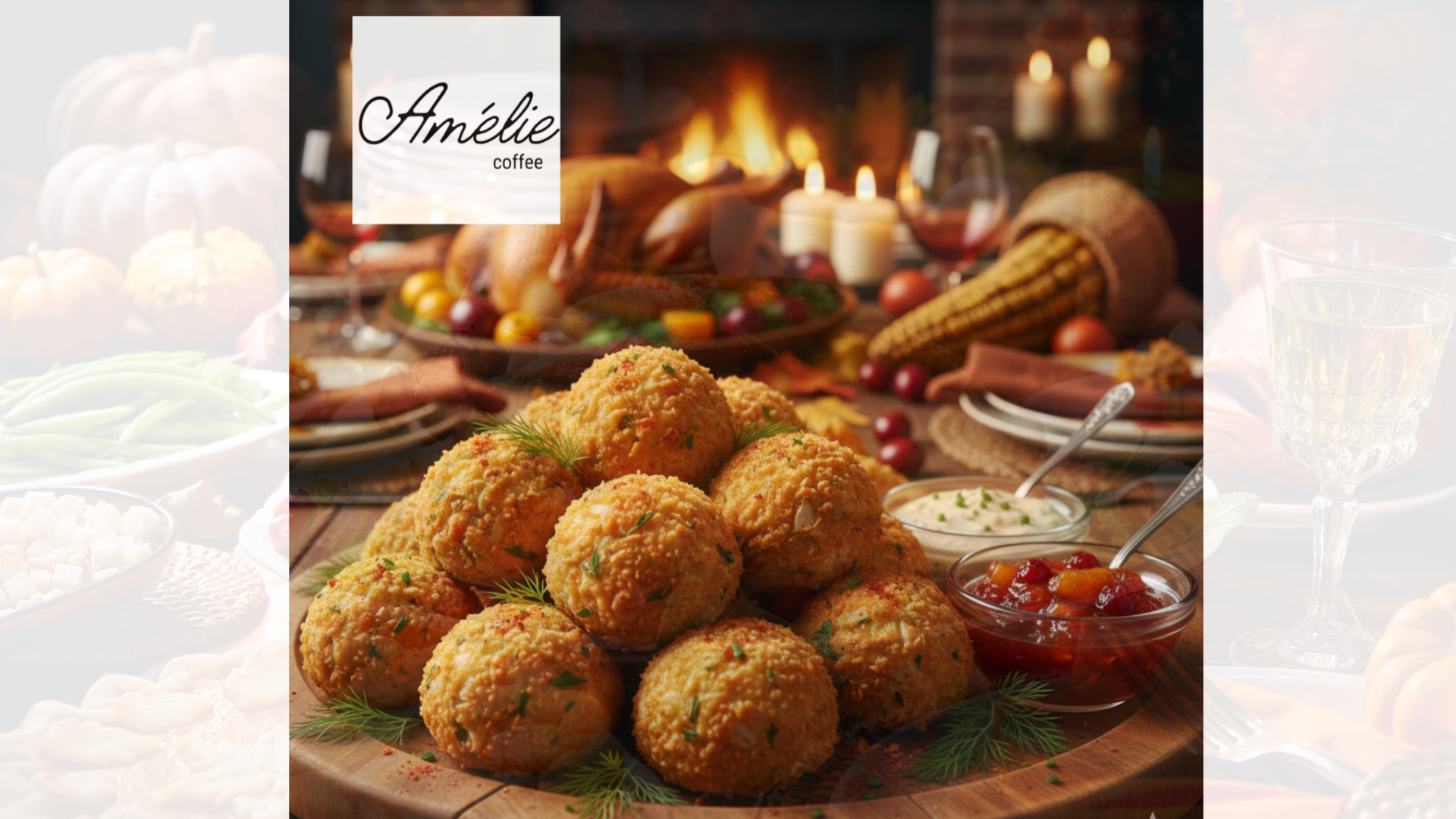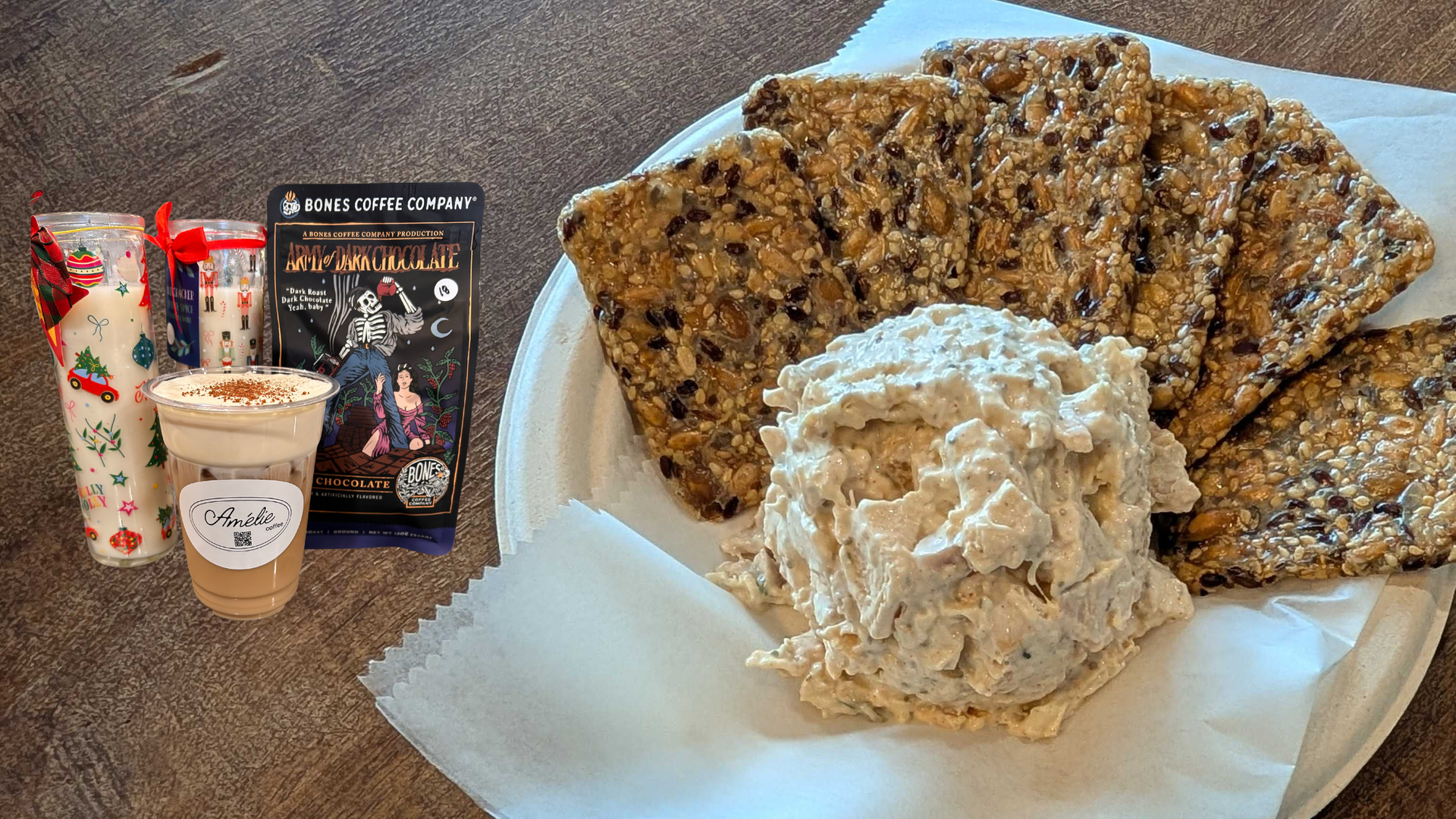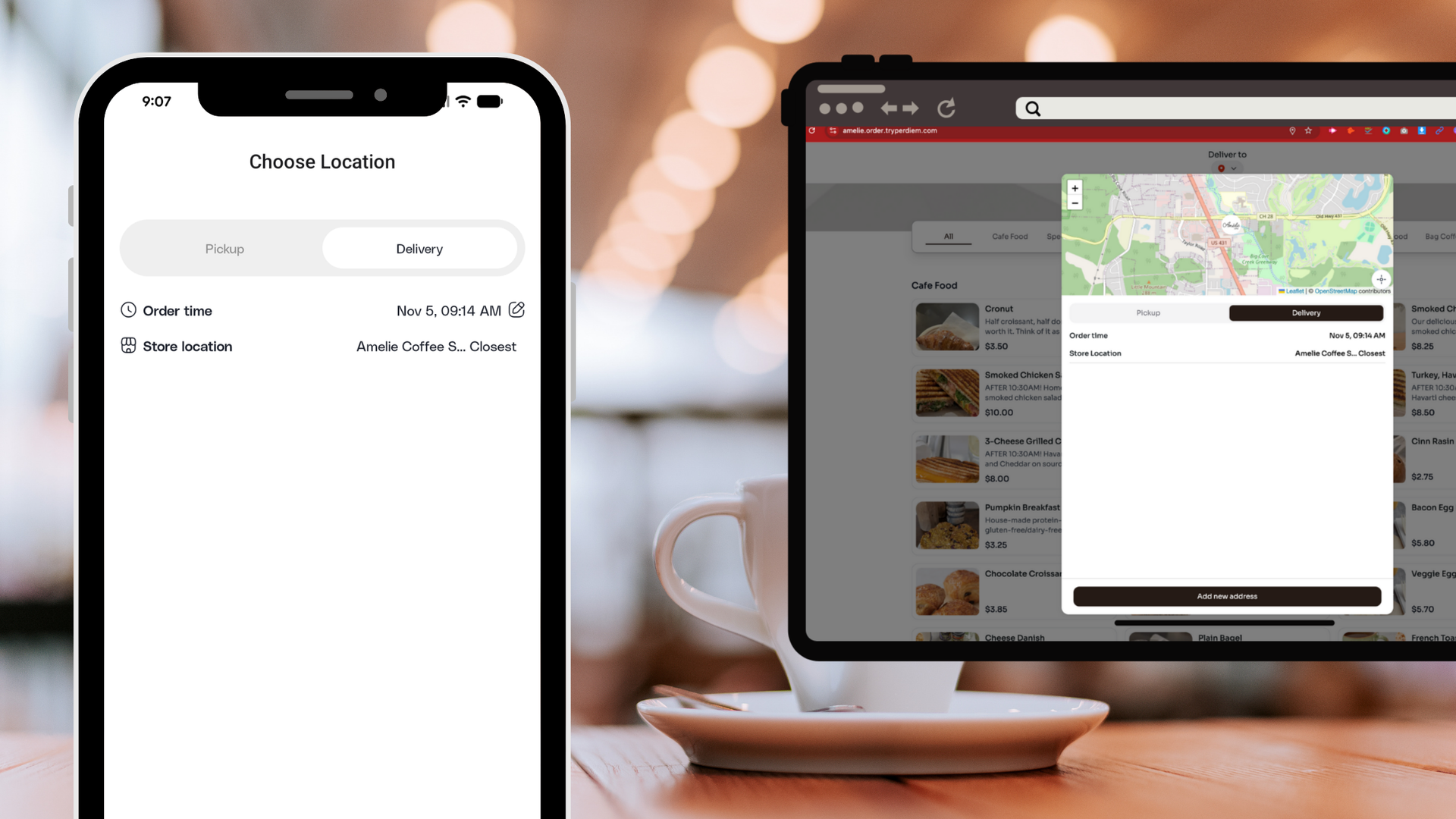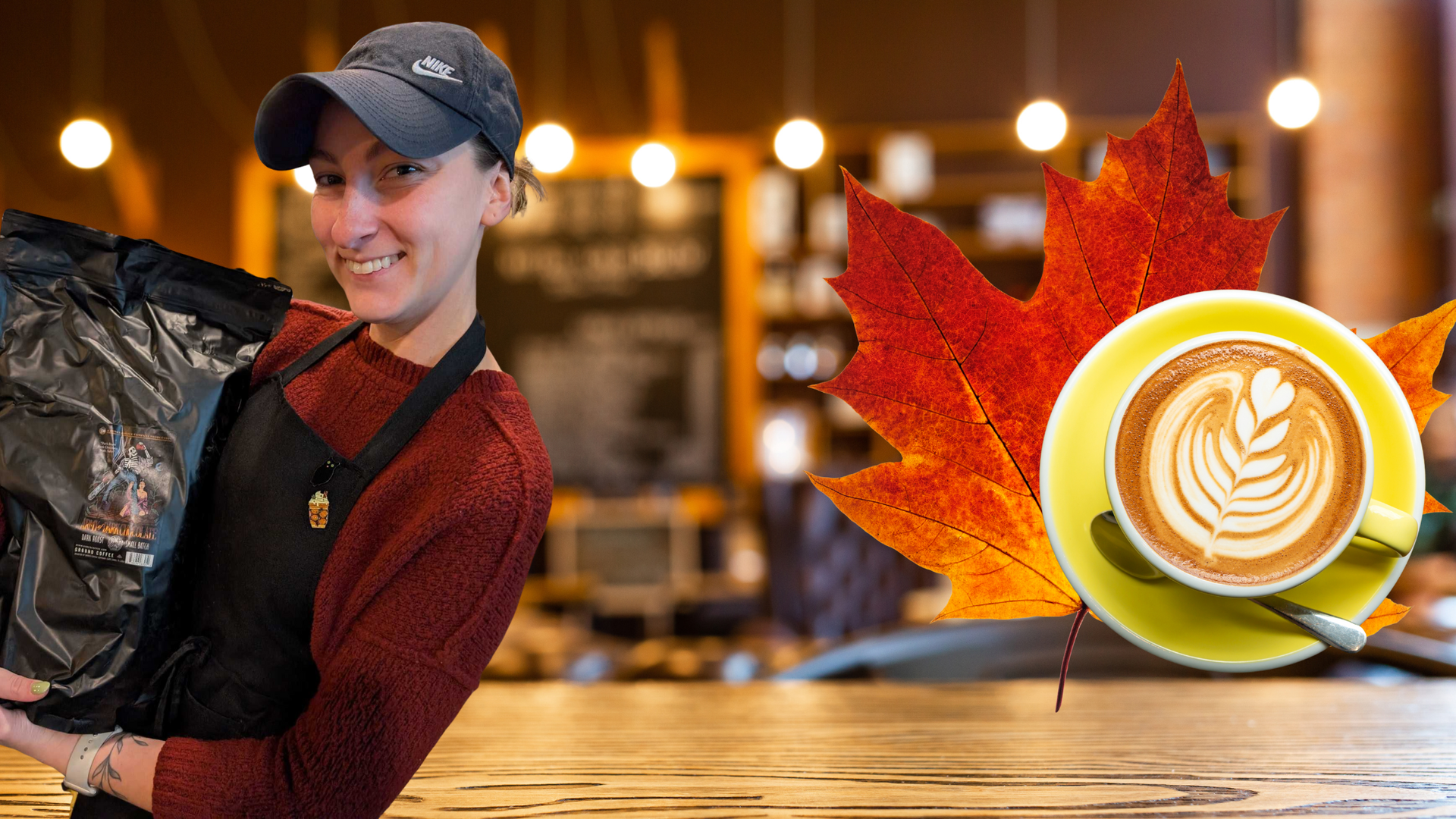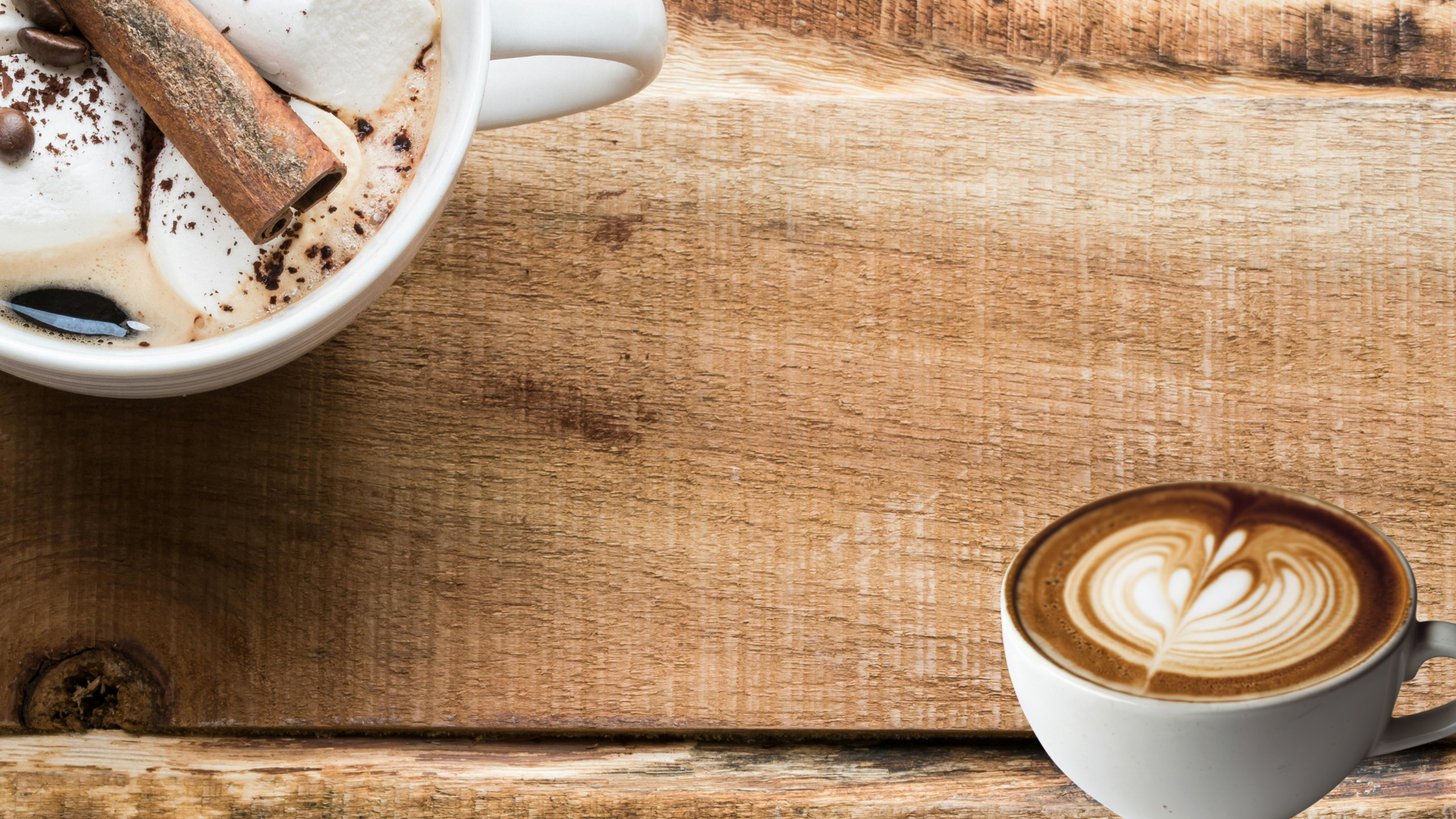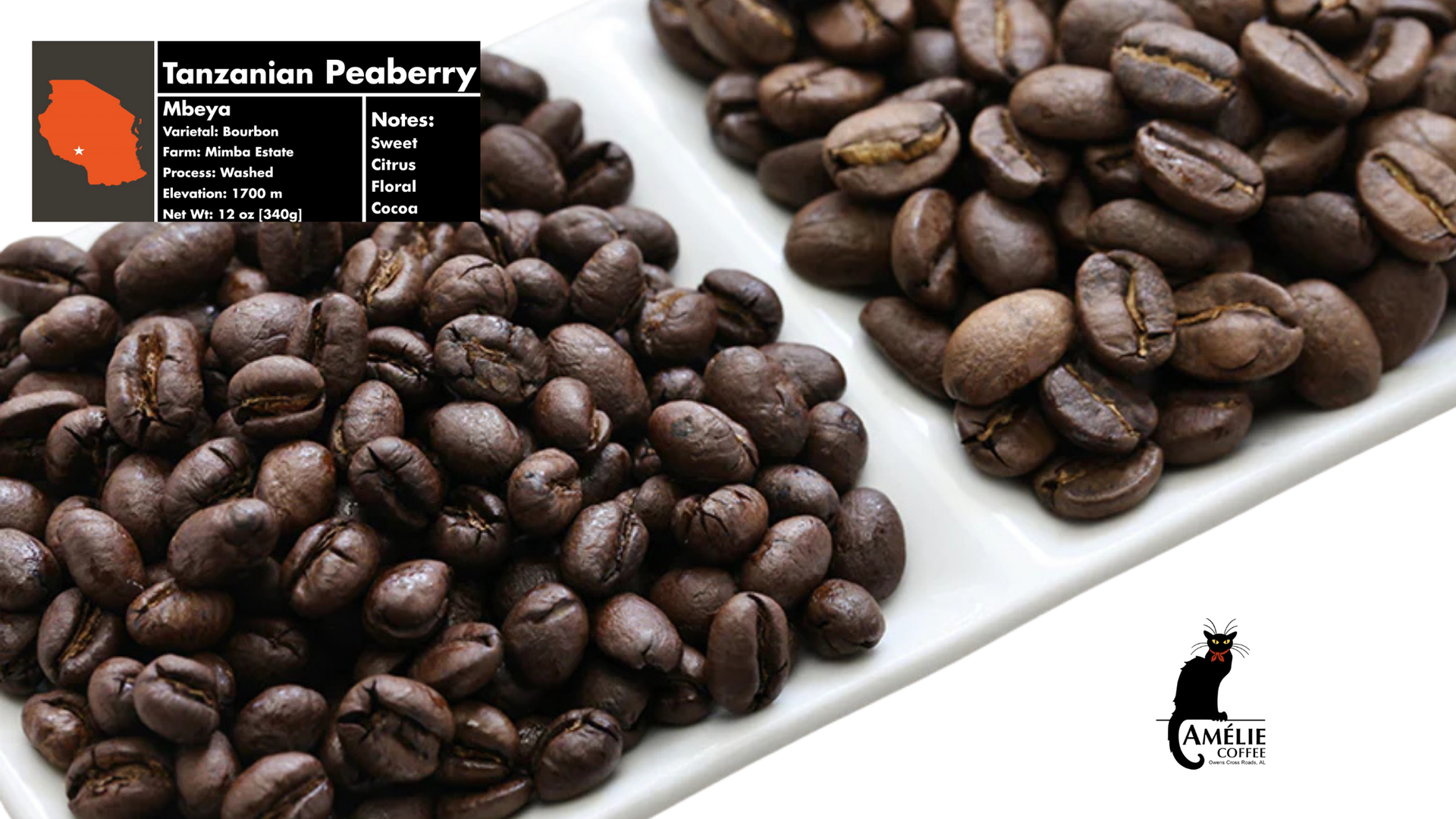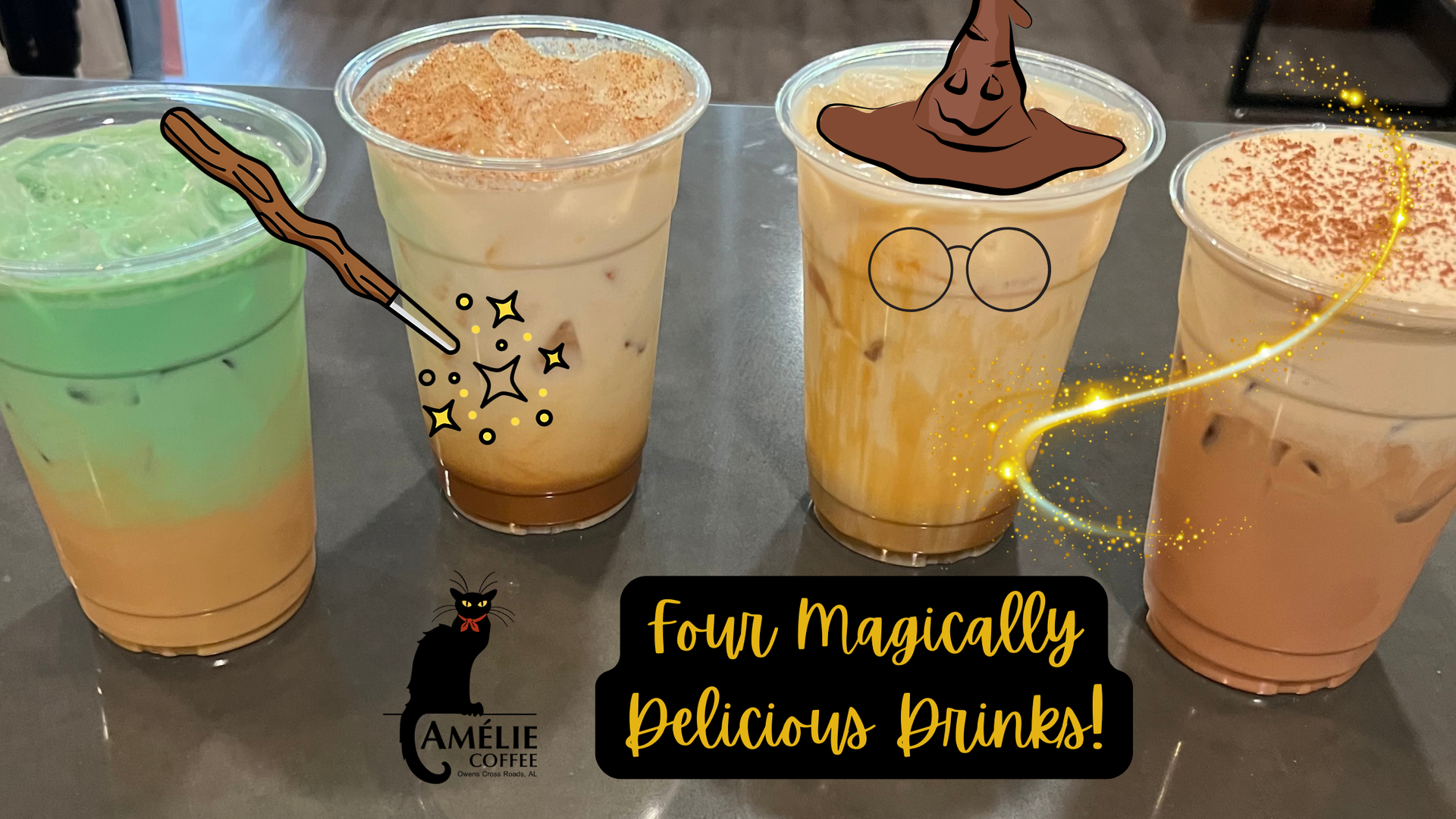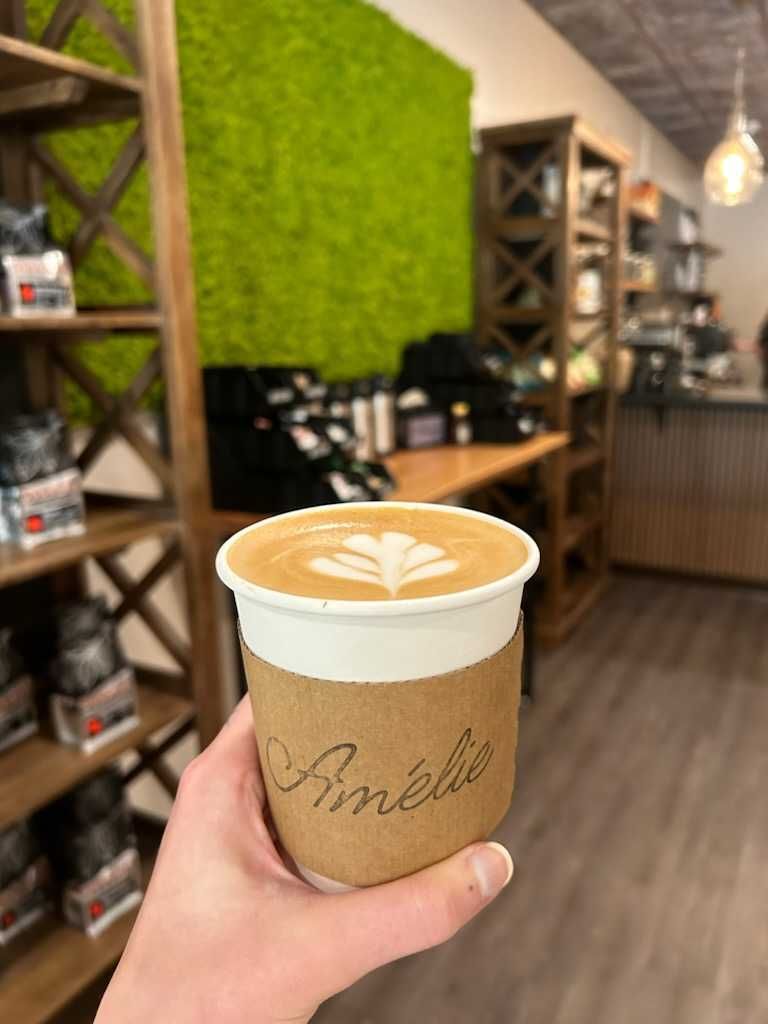Burned to a Crisp: Why Chain Coffee Tastes Like Charcoal—and What That Means for You
Let’s play a quick game. Imagine you’re walking into one of those big-name chain coffee shops—you know the one with the forest creature in the logo. You order your go-to drink, take that first sip, and… boom. Your taste buds are hit with a wall of bitter, smoky intensity. You’re not entirely sure if you just drank coffee or licked the inside of a wood-fired oven. Sound familiar?
If you’ve ever wondered why chain coffee so often tastes, well, burned, you’re not alone. And if you’ve ever questioned whether that level of roast is normal—or healthy—you’re asking the right questions. Spoiler alert: it’s not. But there’s a reason they do it, and it’s got everything to do with business, not flavor.
At Amélie, we’re here to give you the inside scoop on what’s going on with that overly roasted brew, how it affects your body, and why we’ve chosen a radically different (and much tastier) path.
The Business of Burn
Let’s start with the elephant-sized espresso machine in the room: why do chain coffee shops roast their beans so darkly in the first place?
The answer is equal parts marketing, consistency, and economics.
1. Masking Bean Quality
Large chains buy beans in massive volumes. We’re talking millions of pounds a year. To meet that demand, they often source lower-quality beans—beans that might be uneven in size, have defects, or lack complex flavors. The solution? Roast them so dark that none of that matters. A French roast to the rescue! Or should we say… funeral pyre roast?
When you roast beans to a near-burned state, the natural flavors of the origin—notes like citrus, berry, chocolate, or floral tones—are obliterated. What’s left is bitterness, smoke, and uniformity. Every cup tastes exactly the same, whether you’re in Birmingham or Bangkok. That’s intentional.
2. Brand Identity Through Flavor
Chains have trained your palate to associate “strong” with “good.” That dark, burnt flavor isn’t a mistake—it’s their signature. But “strong” doesn’t mean “better.” It just means overcooked. Like a steak left on the grill until it resembles a shoe sole, over-roasting removes nuance and replaces it with brute force.
It’s also a clever play by the big brands—one you might not even realize is happening (at a cost to you and your taste buds). By popping up on every corner and consistently serving the same over-roasted beans, they’re shaping public taste. The goal? To convince you that this is what coffee is supposed to taste like. That way, they can keep using cheaper beans, maximize profits, and expand without anyone questioning the flavor.
3. Shelf Life and Stability
Over-roasted beans have a longer shelf life. They’re less sensitive to aging because they’ve already been pushed to their limits. For global chains, this means beans can be roasted, bagged, shipped, and shelved for weeks (or months) without dramatic changes in flavor. It’s convenient—but it comes at a cost.
Taste the Bean, Not the Burn
Here at Amélie Coffee, we take the opposite approach.
We source high-quality, ethically grown beans from roasters (like Chattanooga's Goodman's Coffee) with farms in places like Colombia, Brazil, and Sumatra—beans that are already bursting with flavor. Our job is not to hide those flavors under a blanket of char. It’s to highlight them.
We do this with light to medium roasts that bring out the beans’ natural personalities. Some are bright and citrusy, others are nutty and chocolatey, and some have soft floral or caramel notes. Every roast has a story, and we want you to taste every chapter.
We believe your cup of coffee should taste like something grown, not something burned.
But Wait—Is Over-Roasted Coffee Bad for You?
Here’s where it gets interesting. Over-roasted coffee doesn’t just taste worse—it can have health consequences, too. Let’s break it down.
1. Acrylamide: The Hidden Chemical
Acrylamide is a chemical compound that forms when certain foods are heated to high temperatures, especially starchy foods and—yep—coffee beans. The darker the roast, the more acrylamide you’re likely to find.
According to research (and FDA guidance), acrylamide has been classified as a potential carcinogen by the International Agency for Research on Cancer. While the levels in coffee aren’t alarmingly high, consistently drinking heavily roasted coffee increases your exposure. And here’s the kicker: lighter roasts typically have less acrylamide and more antioxidants.
So when your favorite chain brand is giving you that extra-dark roast “for flavor,” it’s also giving you a little bonus chemical you didn’t ask for.
2. Increased Acidity and Digestive Trouble
Over-roasted coffee tends to be more acidic, which can irritate your stomach lining and lead to digestive discomfort. If you’ve ever wondered why chain coffee gives you heartburn, it’s not your imagination—it’s chemistry.
Lighter, more balanced roasts (like the ones we serve at Amélie) tend to be easier on the stomach, especially when brewed properly.
3. Caffeine Content Drops
Here’s a surprising twist: the darker the roast, the less caffeine the beans retain. So if you’re ordering that “extra bold” roast for a pick-me-up, you might actually be getting less buzz than you think.
Light to medium roasts not only preserve the bean’s flavor integrity—they also pack more natural caffeine. It’s like getting a better drink and a better jolt at the same time.
>>> Order online now and have it ready and waiting for you! Get ourApp
Your Tastebuds Deserve Better
Coffee doesn’t have to be bitter to be bold. It doesn’t have to be dark to be complex. At Amélie, we celebrate coffee as a craft. We take care in choosing beans, roasting them, and brewing them—just like a sommelier cares for wine. That’s why we like to say:
Taste the bean. Not the burn.
We’re not trying to taste the roasting process. We’re trying to taste the coffee itself. Because behind every bean is a farmer, a harvest, a region, a story. Why would we want to burn all that away?
So…What Should You Look For?
If you’re curious to expand your coffee horizons and get away from the chain coffee blues, here are a few quick tips:
• Ask where the beans come from. A good café should be able to tell you the country, region, or even the farm.
• Choose medium or light roasts. These preserve more of the bean’s character and are often less bitter.
• Trust your taste. If you sip something and it reminds you of burnt toast, that’s not “bold”—that’s overdone.
• Try a pour-over or French press. These methods highlight subtle flavors better than a traditional drip machine.
• Drink it black (at least once). We know it’s not for everyone, but trying a high-quality roast black can open up a whole new world of flavors—ones that milk and sugar usually mask.
TRIVIA: In fact, the top reason people put so much sugar and milk into coffee? Over-roasted beans help improve the sharp flavor of burned beans.
Final Sip
We get it. Big chain coffee is everywhere. It’s fast, it’s familiar, and it gets the job done. But the trade-off is flavor, health, and—frankly—soul. If you’ve ever walked out of a coffee shop thinking, There has to be something better than this, you’re right. There is.
It’s in places like Amélie, where we honor the bean, not the branding. Where we roast gently, brew precisely, and serve with care. Where your coffee tastes like the place it came from—not the fire it barely escaped.
So next time you’re craving a cup, skip the burnt bitterness and come try something that tastes like… actual coffee. Come see us now in Hampton Cove. We promise your taste buds—and your body—will thank you.
Amélie Coffee
🕖 Open 7am–3pm weekdays, 8am–2pm weekends
📍 Hampton Cove, AL
☕ Taste the bean. Not the burn.
Get our mobile app and order ahead!
🌐 https://amelie.coffee/app
Latest Treat! The Pumpkin King Cold Brew
House-made Bones Frosted Pumpkin cold brew, cream, cinnamon, and pumpkin-spiced cold foam topper. Yeah. Hail to the king, baby!


